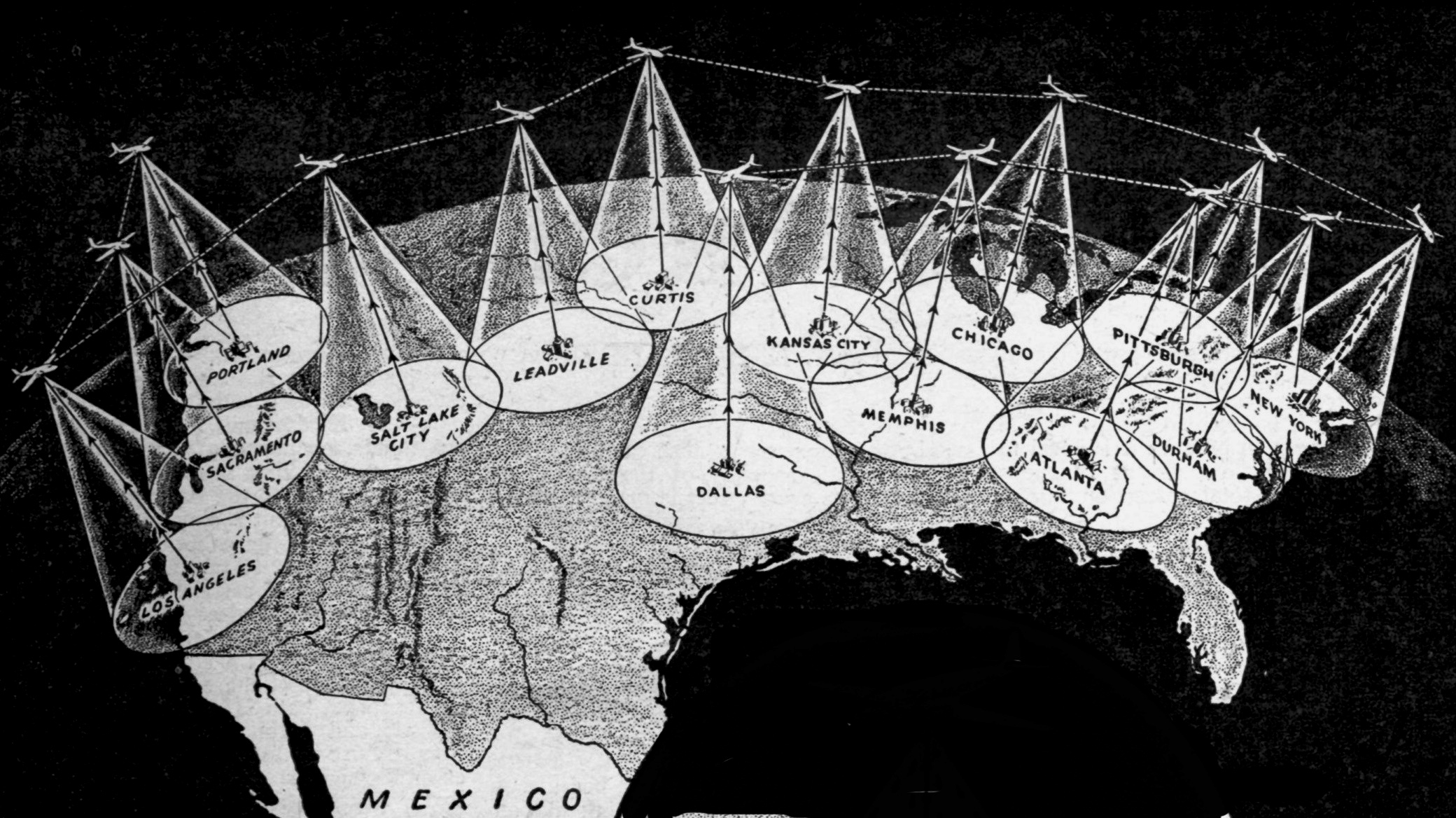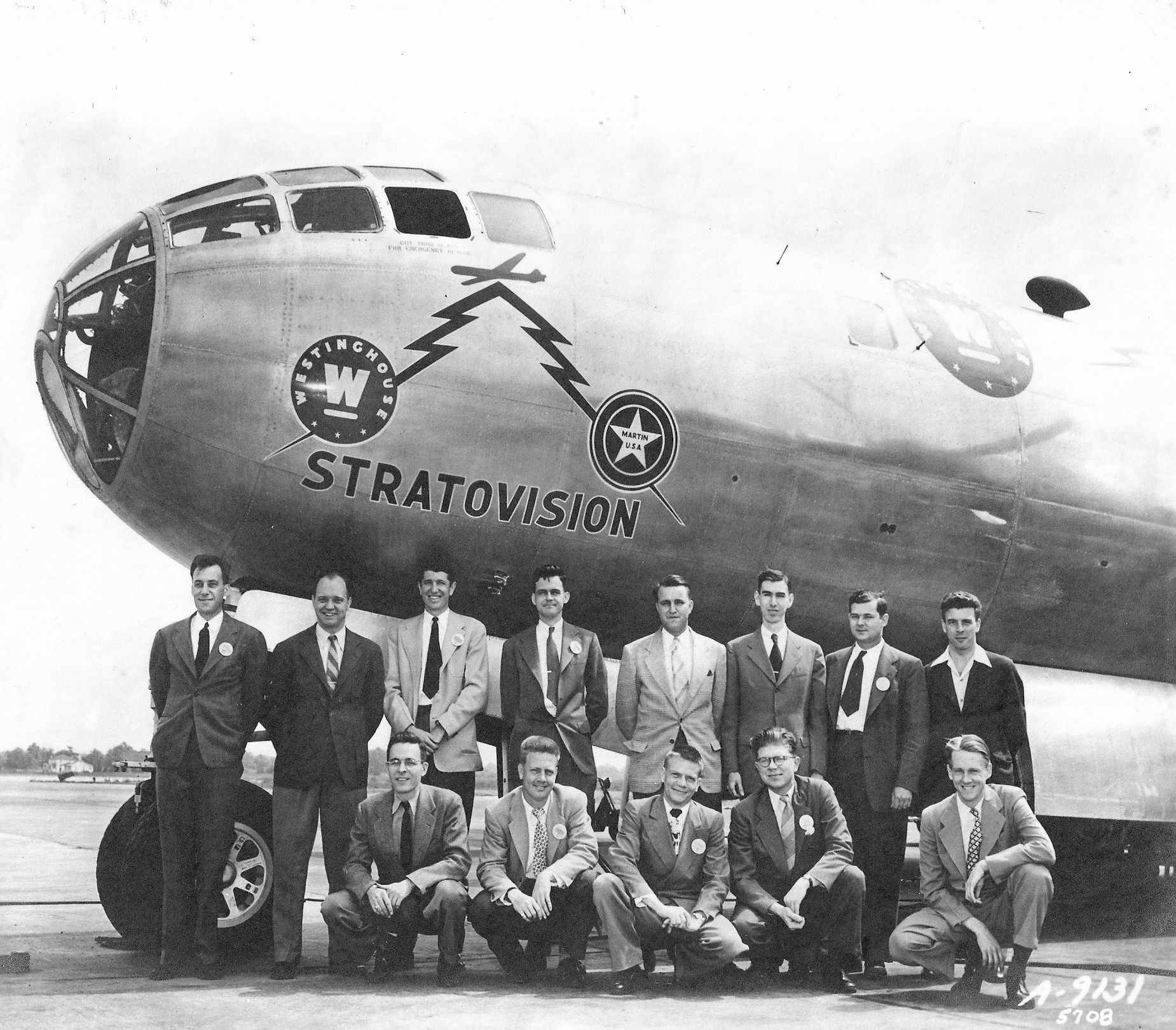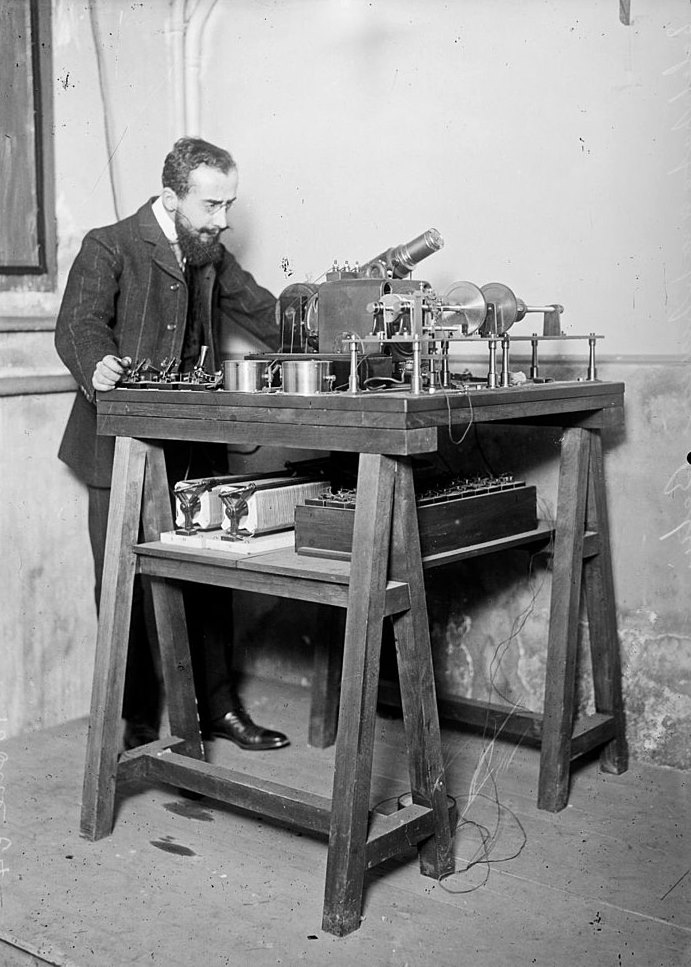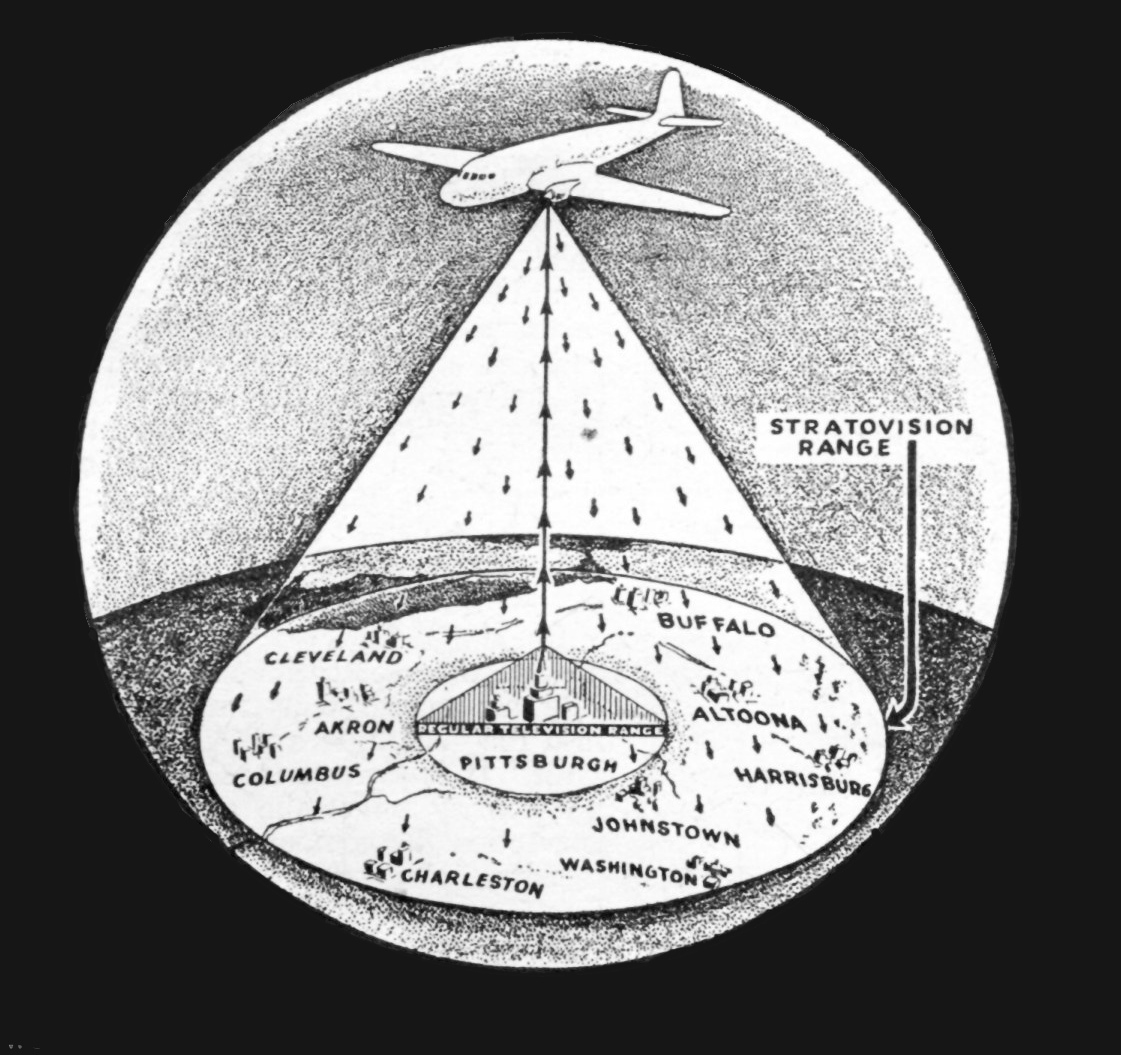This Month in Broadcast History: December
75 years ago this month, Westinghouse announced plans to test airplane-based 'Stratovision' TV transmission system

75 Years Ago – December 1947: Limited connectivity to television network centers in New York continues to hamper the rollout of new U.S. television outlets. (At year’s end, only 18 stations were on the air). And while AT&T Long Lines has committed to constructing coast-to-coast coaxial cable and microwave video circuits, widespread delivery of network programming is still years away.
As a workaround, Westinghouse announced that early in 1948 it would begin the second phase of an experiment for delivering television over wide areas from airborne broadcasting platforms. This concept—dubbed “Stratovision”—was initially demonstrated in 1946, but that trial uncovered several “bugs.” The company says that these shortcomings have now been addressed and is now ready for a second round of testing.
Modified military B-29 bombers will be used, with Westinghouse foreseeing as many as 14 of the aircraft in the skies simultaneously for relaying network TV programming received from a terrestrial source to serve other population centers and to also provide network connectivity from coast-to-coast.

The planes will fly at altitudes between 20,000 and 30,000 feet, allowing reception of ground-based TV transmitters from as far away as 200 miles and retransmission to homes within a 400-mile-wide area beneath each plane. The modified bombers will carry enough fuel to remain in their holding patterns or “orbits” for half a day. TV Ch. 6 (82-88 MHz) has been chosen for the downlink transmissions, allowing set owners to receive them without any special equipment.
Also in the final month of 1947 comes GE’s announcement of its first “large screen” television receiver—a monster 30-inch model, designated the “901.” As available cathode ray tubes are mostly in the 10-inch or smaller range, GE is using a projection system with a special 5-inch CRT coupled to a Schmidt optical system to achieve the necessary magnification.

Suggested retail price is $2,250 (antenna and installation extra), which is equal to about $30,000 in 2022 money! Typical of most all early projection sets, the pictures were quite dim, requiring viewing to be done in darkened rooms. However, there was an upside to the GE set—owners needn’t worry about thieves making off with the expensive sets, as the 901 weighed in at nearly 400 pounds!
OTHER NEWS FROM TV’S PAST:
The professional video industry's #1 source for news, trends and product and tech information. Sign up below.
100 Years Ago – December 1922: Television is now starting to progress beyond patents for theoretical systems which may or may not work. The Dec. 2, 1922 New York Times reported that a French inventor, Édouard Belin, had just demonstrated a “Tele-Vision” (or “long-distance sight,” as the Times explained the term for its readers) device at the Paris’s Sorbonne.

According to the report, Belin, who had previously transmitted still pictures by wire, had moved to a wireless platform and succeeded in capturing (dynamic) “flashes of light” via selenium cell and then sending the resulting electrical impulses via radio to be reproduced as flashes on a mirror. The report, termed the showing a “preliminary experimental demonstration,” but stated that it proved “that the general principle of sending a stationary scene had been solved.”
50 Years Ago – December 1972: In yet another approach for providing consumers with in-home recorded video entertainment, MCA (Music Corporation of America) offered the first public demonstration of its “Disco-Vision” videodisc player that was under development. The device was intended to complete with the “CED” (capacitance electronic disc) video player system (“SelectaVision”) being developed by RCA. Disco-Vision technology—which utilized a low power laser for recovery of information from optical discs—was viewed as superior to RCA’s player, which relied on a mechanical stylus tracking groves embossed in a disc.
Both systems eventually went into production, but they were soon eclipsed by Betamax and VHS videocassette machines as neither the MCA nor the RCA products allowed consumers to make their own recordings.)
25 Years Ago – December 1997: Although broadcasters are committed (albeit, some reluctantly) to making the conversion to digital (and high definition), and new DTV studio and transmitter equipment is now becoming more and more available there is still at least one missing link—a means for transporting bitstreams from studio to transmitter.
Upgrading existing STL microwave systems to handle the 19.39 Mbps compressed DTV signal is pretty much a non-starter, and while microwave manufacturers are aware of the situation and have been developing new models, these are still in their relative infancy (Harris had only showed an initial prototype at the NAB Show that April.) Fiber is not a viable STL option for many either. As an industry writer described the situation: “…stations want to get on with it and transmit ‘real’ HDTV from the studio without having to bicycle tapes to the transmitter.”
James E. O’Neal has more than 50 years of experience in the broadcast arena, serving for nearly 37 years as a television broadcast engineer and, following his retirement from that field in 2005, moving into journalism as technology editor for TV Technology for almost the next decade. He continues to provide content for this publication, as well as sister publication Radio World, and others. He authored the chapter on HF shortwave radio for the 11th Edition of the NAB Engineering Handbook, and serves as contributing editor of the IEEE’s Broadcast Technology publication, and as associate editor of the SMPTE Motion Imaging Journal. He is a SMPTE Life Fellow, and a member of the SBE and Life Senior Member of the IEEE.


